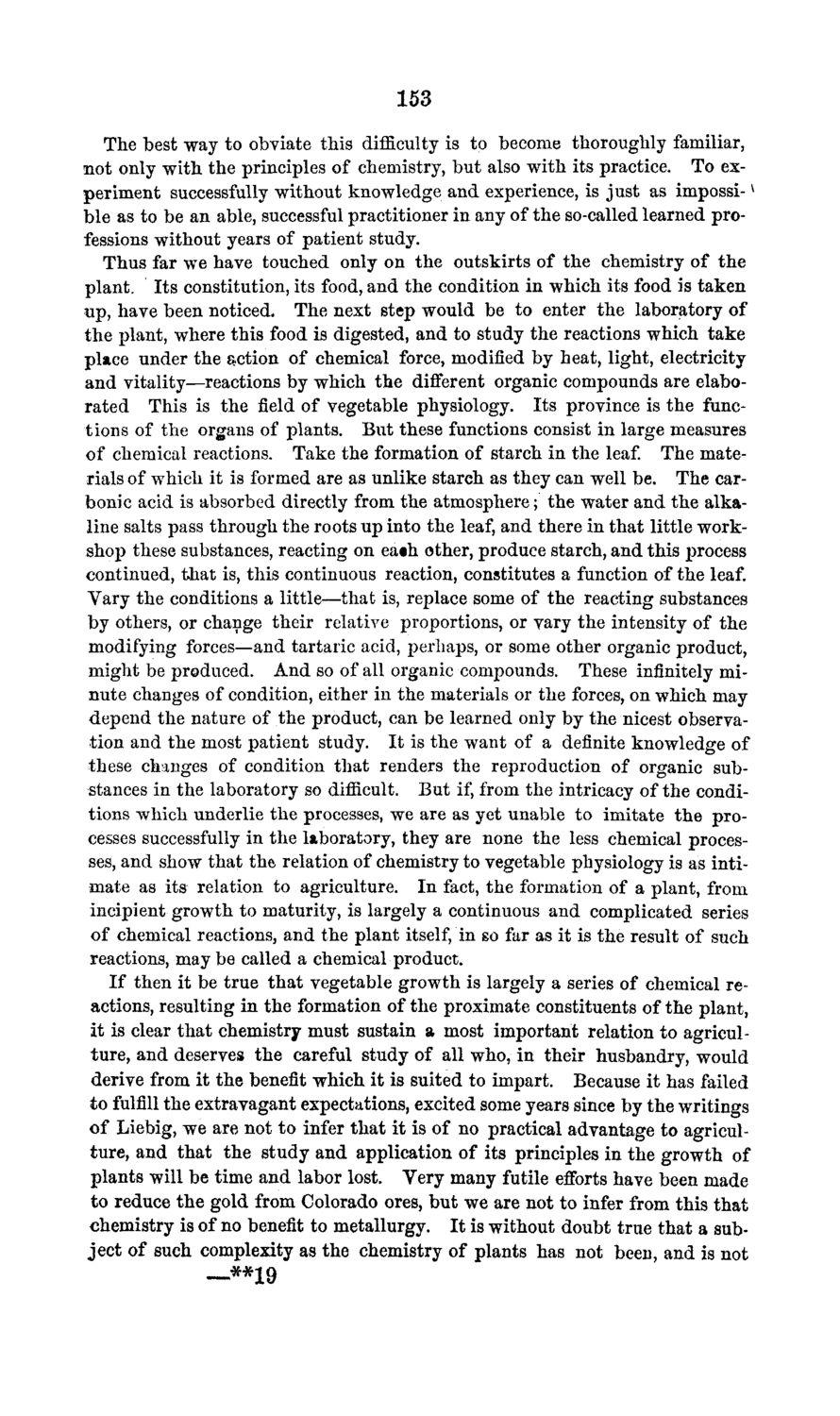| |
| |
Caption: Board of Trustees Minutes - 1869
This is a reduced-resolution page image for fast online browsing.

EXTRACTED TEXT FROM PAGE:
153 The best way to obviate this difficulty is to become thoroughly familiar, not only with the principles of chemistry, but also with its practice. To experiment successfully without knowledge and experience, is just as impossi- * ble as to be an able, successful practitioner in any of the so-called learned professions without years of patient study. Thus far we have touched only on the outskirts of the chemistry of the plant. Its constitution, its food, and the condition in which its food is taken up, have been noticed. The next step would be to enter the laboratory of the plant, where this food is digested, and to study the reactions which take place under the action of chemical force, modified by heat, light, electricity and vitality—reactions by which the different organic compounds are elaborated This is the field of vegetable physiology. Its province is the functions of the organs of plants. But these functions consist in large measures of chemical reactions. Take the formation of starch in the leaf. The materials of which it is formed are as unlike starch as they can well be. The carbonic acid is absorbed directly from the atmosphere; the water and the alkaline salts pass through the roots up into the leaf, and there in that little workshop these substances, reacting on eath other, produce starch, and this process continued, that is, this continuous reaction, constitutes a function of the leaf. Vary the conditions a little—that is, replace some of the reacting substances by others, or change their relative proportions, or vary the intensity of the modifying forces—and tartaric acid, perhaps, or some other organic product, might be produced. And so of all organic compounds. These infinitely minute changes of condition, either in the materials or the forces, on which may depend the nature of the product, can be learned only by the nicest observation and the most patient study. It is the want of a definite knowledge of these changes of condition that renders the reproduction of organic substances in the laboratory so difficult. But if, from the intricacy of the conditions which underlie the processes, we are as yet unable to imitate the processes successfully in the laboratory, they are none the less chemical processes, and show that the relation of chemistry to vegetable physiology is as intimate as its relation to agriculture. In fact, the formation of a plant, from incipient growth to maturity, is largely a continuous and complicated series of chemical reactions, and the plant itself, in go far as it is the result of such reactions, may be called a chemical product. If then it be true that vegetable growth is largely a series of chemical reactions, resulting in the formation of the proximate constituents of the plant, it is clear that chemistry must sustain a most important relation to agriculture, and deserves the careful study of all who, in their husbandry, would derive from it the benefit which it is suited to impart. Because it has failed to fulfill the extravagant expectations, excited some years since by the writings of Liebig, we are not to infer that it is of no practical advantage to agriculture, and that the study and application of its principles in the growth of plants will be time and labor lost. Very many futile efforts have been made to reduce the gold from Colorado ores, but we are not to infer from this that chemistry is of no benefit to metallurgy. It is without doubt true that a subject of such complexity as the chemistry of plants has not been, and is not —**19
| |